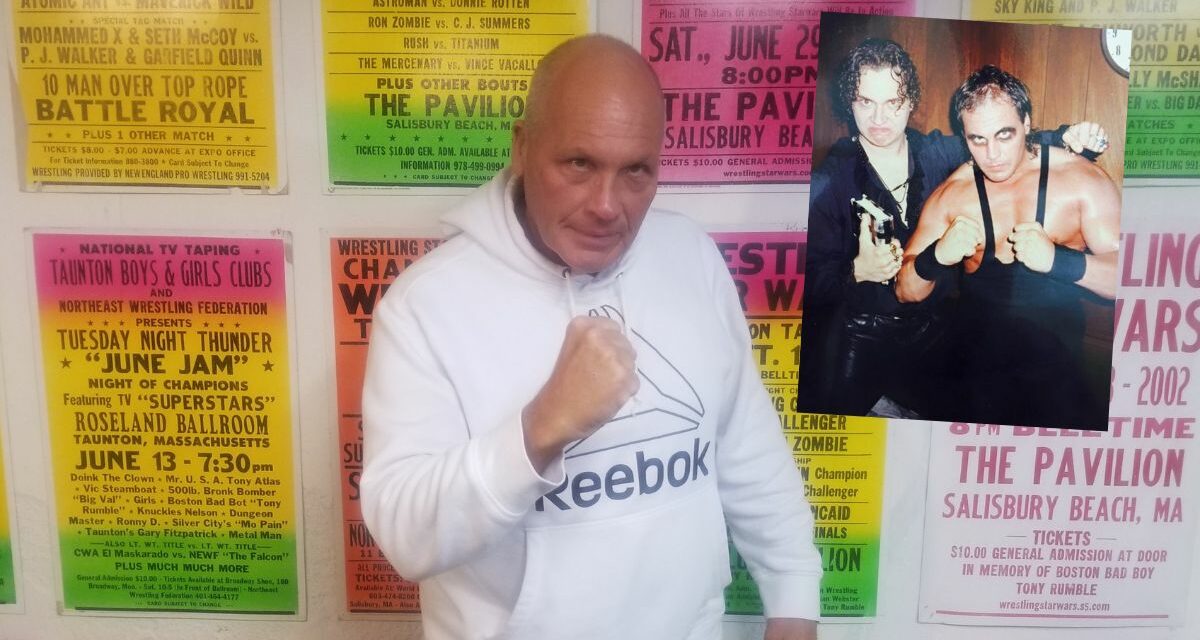It would be difficult for today’s wrestling fan to imagine life without the internet or the newest iPhone. Today you can easily do research for just about anything. Back in the mid-1980s, if you wanted to keep up to date on the latest news in the professional wrestling world, you bought wrestling magazines. The pages of which were dominated by the WWF, NWA and AWA. Hulk Hogan was the WWF World champion.
I lived in the rural town of Scituate, Rhode Island, and cable television was not yet available. I’d heard about cable TV, and I salivated over the thought of getting it. Mainly because it would unlock the world of many other wrestling promotions from across the country. Until cable arrived in our area, the only wrestling I watched was WWF. In order to keep up with the happenings in the wrestling world, I bought magazines. Lots and lots of magazines.
There was a promotion within these publications called the National Wrestling Federation. I knew many of their wrestlers from the AWA, NWA and WWF. The NWF World champion was a diabolical wrestler named DC “Mad Dog” Drake.
While the Hulkster was telling his Hulkamaniacs to train, say their prayers and eat their vitamins, Drake was eating raw meat and foaming from the mouth during his interviews. He wore a dog collar around his neck with a heavy chain attached to it. His eyes had circles of thick black paint around them. He was anti-establishment. His wrestling style was hardcore before anyone was using that word. He could also get down on the mat and wrestle. In addition, he took some crazy bumps during that time period. I thought his whole deal was cool. Drake jumped off the pages of wrestling magazines.
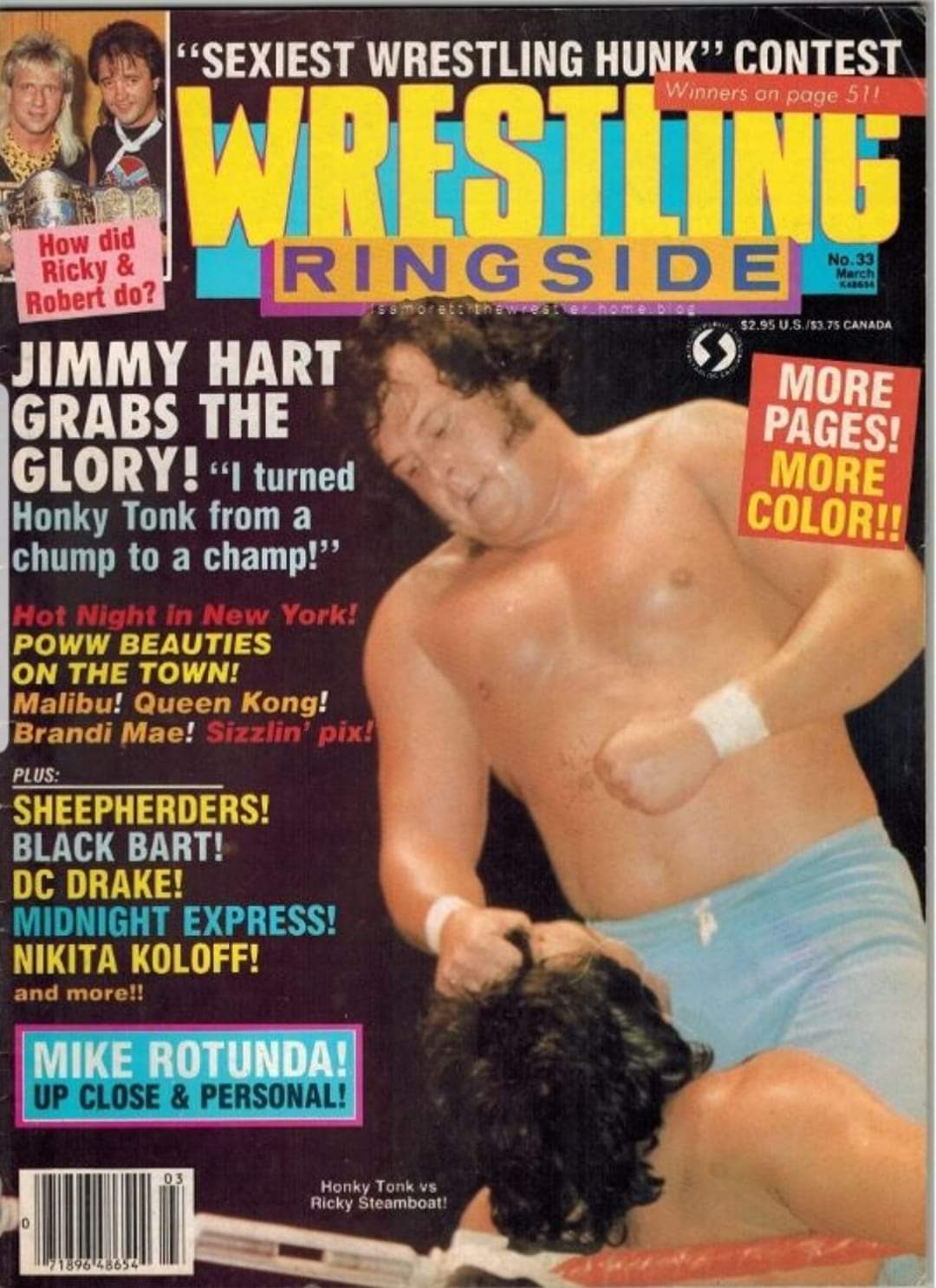
DC Drake is an unknown name on this March 1988 cover compared to the big stars.
Fast forward to 2022. I became aware Drake was living in Massachusetts. I reached out to him in hopes of having a sit-down interview. He was open to the idea. I was about to find out this man took a very different path in life than most wrestlers from that era. What he was showing the public was the complete opposite of who he is in real life.
His story is remarkable. He travelled the globe engaging in bloody feuds with some of the biggest names in wrestling history. He battled the likes of Bruiser Brody, Sgt. Slaughter, Superstar Billy Graham and Cactus Jack just to name a few. During his career, he had over 1,000 professional matches. Drake and I met in person. The following is what came out of our conversation about wrestling and life. It would be impossible to cover his entire wrestling career in an article. That might be better served in the pages of a book. I will do my best to do this article justice. This is the anatomy of the Mad Dog.
Donald Clyde Drake Jr. was born on September 16, 1956, in Easton, Pennsylvania. His parents were the late Donald Sr. and Carolyn Drake. He is of Irish/English descent. He is the oldest of four children. He grew up in Phillipsburg, New Jersey. He loved playing baseball in his youth. He was and still is, a big New York Yankees fan. Drake immediately shared a story from his days playing baseball: “I played American Legion baseball when I was younger. My favorite Yankee player was Sparky Lyle. He would come in the game with a mouth full of tobacco. I never smoked. I never drank alcohol, but Sparky was my hero, so I decided I was going to start chewing tobacco. I was playing right field. The first time I put chew in my mouth I found the spitting to be disgusting. Instead, I swallowed it. The next thing I knew, everything is going around in circles. I woke up in the emergency room. That was my first and only experience with chewing tobacco.”
This would not be the last time Drake would lose consciousness. I asked Drake about his first memory of professional wrestling. “I was sitting in a room with my father. He turned on the television. WWWF wrestling was on. It was King Curtis. What I remember was he was foaming from the mouth. He scared the living daylights out of me. I suspected wrestling wasn’t on the level, but this guy was so scary, so frightening to me, that anything he did scared the crap out of me.”
“I also remember Chief Jay Strongbow was getting a trophy for something and someone ended up breaking the trophy over his head and blood coming down his face. As a kid, that also frightened me. I was scared to watch wrestling after that. Those are the two things I remember most. My father wasn’t really a wrestling fan, but he would take me to the armory in Phillipsburg, to see the matches. I remember walking in there and the place smelled of smoke and popcorn. We would yell at the wrestlers, and I got scared the wrestlers were going to attack my dad. That was such a remarkable experience. The environment, the smells, the excitement. Everything I was seeing woke me up about wrestling when I saw it live. I can’t remember anyone on the card, but I remember the atmosphere.”
After seeing wrestling live, Drake took a bigger interest in the sport. His favorite was Bruno Sammartino. “Bruno was number one in my book. He reminded me of my father. My dad was disabled so I didn’t get to do much with him as a kid. He had broken his back. Bruno stood for everything my dad stood for — truth, justice and the American way. They both stood up for what was right,” Drake recalled. “Bruno really got my attention at that point in my life. In the mid-’70s, when I was old enough to drive, I went to the Philadelphia arena every three weeks for the TV tapings. That was my second home. Bruno was champion at the time. I would be sitting on the edge of my seat. I would pat him on the back when he went by on his way to the ring. The Philadelphia arena was an old rickety building. It smelled of cigar smoke and liniment and hot dogs. I could feel the heat coming down from the lights over the ring. When a wrestler hit the canvas, you could see dust coming up. Sometimes as a kid, it was a sensory overload. That’s what made it so exciting.”
Drake graduated from Phillipsburg High School in 1974. He then embarked on a career in law enforcement. “Being a wrestling fan I always wanted to get in the ring and wrestle. I started working out. Then I got a job in the state of New Jersey with the department of corrections. Around 1976, a lieutenant there knew of my interest in wrestling. One day he showed me an advertisement for a wrestling school in Jersey City. The man running the school was Tito Torres. He was an enhancement talent for Vince McMahon. He wasn’t a big guy, but he was respected in the Latin community.”
“At the time, I thought I was a pretty tough guy. I was bench pressing over 500 pounds. I ended up going down there and eventually was trained by Tito. I got in the ring with him, and he tied me up in knots. Tito was a real wrestler. That was how I broke in. It was also my first taste of the wrestling business from a carnival standpoint. A lot of guys going there didn’t have money to pay Tito. They were giving him food stamps in exchange for training. When I first walked in the gym, I recognized Tito and Tony Colon and Paul Moreau from television. I was star-struck seeing these guys. Then I became aware some of them were on welfare. I began to ask myself what I was getting into. Prior to this, I thought even though they were getting beat up every week, they must be making a lot of money because they were wrestling on tv.”
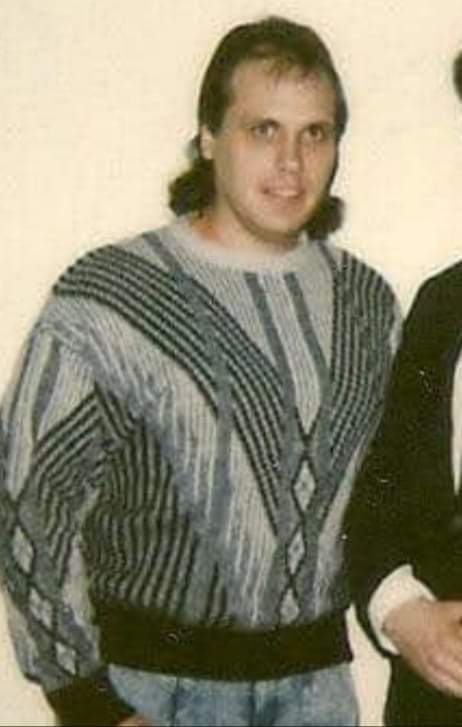
A young Don Drake.
When Drake broke into wrestling, he was not quite yet the Mad Dog. His original ring name was Don Stallion. When he was ring ready, he began his career as a fan favorite. Quite frankly, he had a great look for a babyface. He began competing for Tito Torres in the All-American Wrestling Alliance.
“Tito ran shows in this little, dirty, nasty, cockroach-infested building in Jersey City. The ring was hard as a rock.” Drake recalled. “I wrestled Tony Colon in my pro debut. We took bumps on a ring being held up by milk crates. There was no spring under the ring. I got a concussion. I was concussed so badly I don’t remember the ride home. I woke up in bed the next day.”
Drake would go on to wrestle in packed arenas around the world. On this night, however, the crowd was less than 50 people and he was paid ten dollars. “I was still infatuated with everything. I was sitting in the back with these guys I knew from wrestling on TV. I was sitting in the locker room looking around. Then I had this thought that I was working as a correctional officer making good money. I asked myself, What the heck am I doing here?”
That may have been a moment of clarity regarding professional wrestling, but it didn’t stop Drake from moving forward. Not one bit. The wrestling bug had sunk its fangs into him and bigger and better things were about to happen quickly.
Don Drake always had a vision of running his own wrestling promotion. He paid attention from the beginning. He was extremely confident he could do it. He bought a wrestling ring. That one decision would swing the door wide open for Drake. The next rung on the ladder was International Championship Wrestling. This promotion was run by the Savoldi family. Anyone who ever worked for ICW has a story to tell about the promotion. Drake was no exception.
“I owned my own ring. I dropped the name Stallion and began wrestling as Don Drake. [The] Savoldi [family] started renting my ring and putting me on their shows. One night we were at the Civic Center in Bangor, Maine. This would be my first match for them. Mario came in the back and informed me I was wrestling the bear. I thought he meant Ivan Koloff. What he meant was I would be wrestling a live bear. It was a handicap match with me and Jose Gonzalez facing a real live bear,” Drake remembered. “We were in the ring and Jose told me he was going to grab the bear’s leg and push it down. While this was happening, the bear’s handler was outside the ring pleading with us to not piss the bear off. Unfortunately for me, it was too late. When Jose made his move, the bear whacked me and the next thing I remember, I woke up on the floor outside the ring. After the match in the locker room, the bear and its handler walked by. The bear stopped in front of me and pissed all over my gear. Again, I reminded myself I’m a correctional officer. Asking myself the question, What am I doing here?”
Drake continued to work for ICW against human wrestlers for the next few years. His association with them ran its natural course. He was taking more and more time off from his job as a corrections officer. By his own admission, this was not a good thing. Wrestling has a way of consuming a person and that is exactly what was happening to Drake. Ironically, it was a coworker at the prison who suggested changing his name to DC Drake. Don liked the idea, and the wrestling snowball would continue to grow.
The time had arrived for Drake to run his own wrestling promotion, something he had always wanted to do. He started the Continental Wrestling Alliance. “I met a gentleman named the Concrete Cowboy out of Philadelphia. We started running shows in the VFW hall in Easton. Then I went to Twin County cable company in Allentown. I told them I had an idea for a wrestling show. They liked the idea and now we had TV. It was seen in all the surrounding cities and towns.”
With the CWA up and running, the fans got to see Drake working as a fan favorite. He was young, athletic, polite, soft-spoken and clean-cut. The fans were pretty much getting the real Don Drake in a wrestling ring. However, the wrestling persona living inside Drake was about to be unleashed on the CWA and in time, the entire wrestling world.
“I was teaming with a guy named Eddie Miranda. He was also a guard at the prison. We both worked out together at the Y. We were a solid tag team. I had it in my head what I wanted to do. I turned on him in a big bloody match. From that point on, I was a heel,” recalled Drake. “My first idea was to be a crazy person. I’m working one night for Bob Raskin and a fan yelled out, ‘That guy looks like a mad dog!’ That was where I got the name. The character of DC ‘Mad Dog’ Drake was designed to be a cross between King Curtis and Kevin Sullivan. When I was in Easton, I did a lot of networking. I made sure we had people in the seats. I had TV and radio stations on my side. I worked hard.”
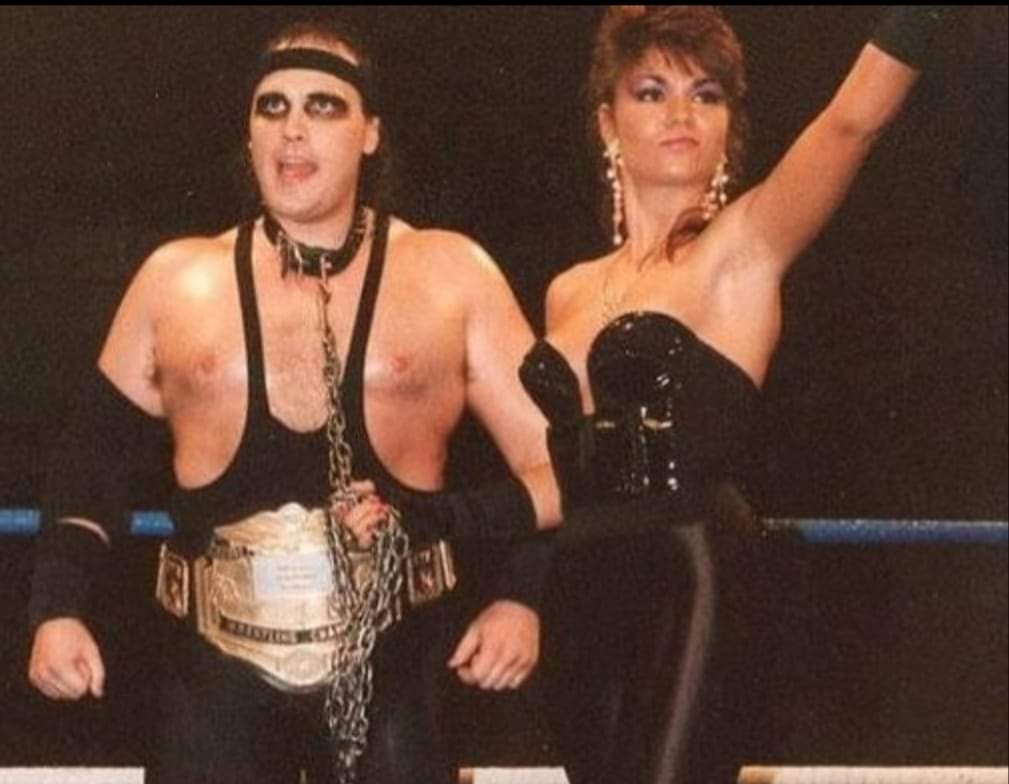
DC Drake and “Woman” Nancy Sullivan.
Drake’s hard work paid off. He had the chops to become a successful promoter as well as a top in-ring talent. He built a strong following, even as a heel. Drake learned the psychology of wrestling. “One of the things I loved about wrestling as a kid was when a wrestler took notice of me in the crowd. I loved the banter. I wanted to do that as a wrestler. I knew how to play the fans. I could spend five to ten minutes with them and not have to do much in the ring.”
Although that may be true, one of the things Drake will always be remembered for is taking crazy bumps. Not only in the ring but also around the arenas. This was something not many wrestlers were doing at the time.
For over two years the CWA ran shows while giving birth to some very familiar names in the wrestling world. They included Mike Kahlua, Ray Appolo, Rocky Jones and Larry Winters.
Drake, the wrestling promoter, was starting to feel his batteries run down. He was burning the candle at both ends. He was holding down his career in law enforcement while he was also promoting and wrestling.
Former ABA basketball coach and wrestling promoter Bob Raskin approached Drake and offered him a position in his wrestling company, the National Wrestling Federation. Drake informed Raskin that he wanted to wrestle for him but that was it. He didn’t want to get involved behind the scenes. The two men agreed to terms, and DC Drake was about to start his historic run with the NWF.
It didn’t take long for Drake to be called upon for other duties within the promotion. He became the booker and television producer. “Around this time major stars from other companies were becoming free agents. The whole point of the NWF was to bring in established wrestlers, but more importantly, develop our own homegrown stars. Our goal was to make money with all of them. It started out going well. We ran shows in Canada. I wrestled Rick Martel up there a few times. We ran shows all over the Northeast. We were in California, Florida, Tennessee and lots of other places. We were working three to four nights a week. It was a lot of travelling. We made a deal with Creative Entertainment. We did a lot of states and local fairs with them. We put together a good show. We were also respectful of other promotions. There were some places we simply wouldn’t go.”
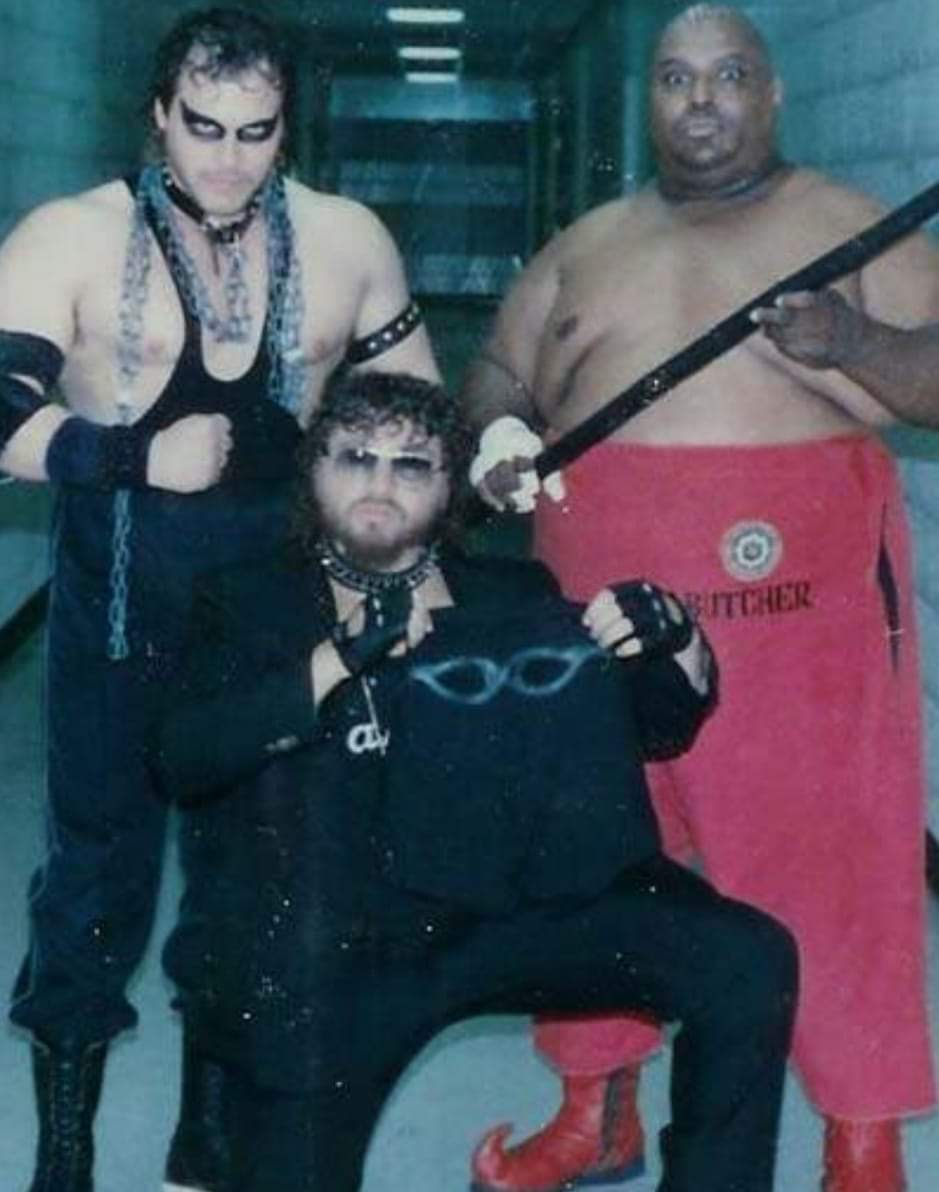
DC Drake, Damien Kane and Abdullah the Butcher.
The talent who stepped foot in an NWF ring is a who’s who of wrestling. Drake was the heavyweight champion. He would hold the title for over two years. He defended the title hundreds of times. Wendi Richter was the women’s champion. Other wrestlers included Superstar Billy Graham, Sgt. Slaughter, Dr. D David Shultz, Abdullah the Butcher, Rocky Johnson, Nikolai Volkoff, Jimmy Snuka, Ivan Koloff, Tonga Kid, Heidi Lee Morgan, Misty Blue and Paul Heyman. Tag teams included the Wild Samoans, the Midnight Rockers, the Fantastics, Buddy Rose and Doug Somers, The Road Warriors and many others. The ring announcer was Gary Michael Cappetta. His presence brought instant credibility to the NWF.
In the ring, Drake engaged in a bloody feud with Jules Strongbow (Frank Hill) during this era. The two had brutal matches all over the country. They had excellent chemistry in the ring together.
Drake lived by the philosophy of doing whatever is good for the business. That was a big reason the NWF had such a successful run. Like all good things in life, the hourglass was turned over at one point for the promotion.
“Things were really cooking. Then Bob Raskin, Creative Entertainment, and Rob Russen began having conflicts. Things started going south. Typical things like money issues and who would be on the marquee. I had a family at home, but we were so busy I slept at the office sometimes. Then Russen was leaving, and he asked me to go with him to Florida. I didn’t want to go, and he got pissed at me. Raskin went off on his own and couldn’t give me any guarantee. I respected him. He was an honest man, but I needed to get paid. Creative Entertainment owned the NWF at this point, so I stayed with them. The bigger names were not exclusive with us and that didn’t help either.”
During his title reign in the NWF, Drake had memorable matches with Bruiser Brody. The promotion would have seen much more of Drake and Brody if it hadn’t been for Brody’s untimely death. The legacy of the NWF during that era was their champion, DC Drake. Although he could have gone to the WWF or the NWA on several occasions, he never went. Drake maintained a mystique about himself by not going. The fans never got to see a Hulk Hogan versus DC Drake or Ric Flair versus DC Drake match.
The amount of work Drake was doing for the NWF was taking its toll on him. The final straw came one night in Pittsburgh. He recalled, “The ring guy got sick, so I had to help set up the ring. Due to wrestlers not showing up, I had to work twice. I was running the locker room. I was counting the money. After the show, I had to break down the ring. Then Wendi Richter asked me if I was going to sweep the hallway too. That hit me hard. It turned out to be my last match for the NWF.”
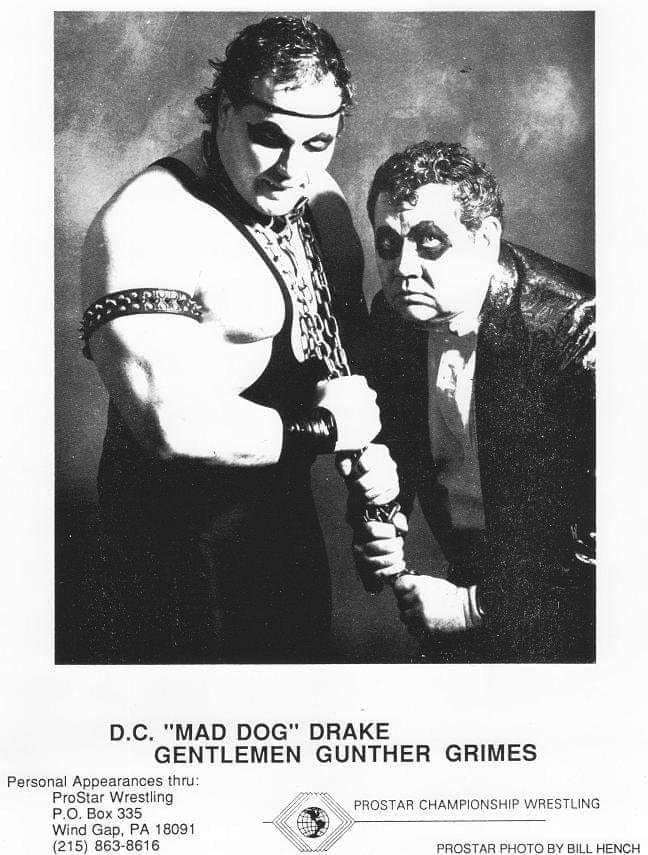
Drake never lost the NWF championship. He would continue to promote and wrestle for several more years, but his time with the NWF was over. He started a new promotion called Pro Star Wrestling. He resumed running shows on the fair circuit. After one summer, Drake knew it was time to close up shop for good. I asked Drake about all the positions he held during his time in the wrestling world and what his favorite would be. He said, “I liked being behind the scenes best. If I could have just booked the shows and produced TV, that’s what I would have done. The creativity was more important to me than performing.”
Drake has seen and done it all in the wrestling business. During his career, he travelled to Japan, The Philippines, Canada, Mexico, Nigeria, The Caribbean, Italy, Greece and all over the United States. He didn’t necessarily enjoy travelling. He had a family at home, and he missed them when he was on the road. “I didn’t drink, I didn’t smoke, and I didn’t do drugs. I was also the boss, so I needed to maintain boundaries with the talent. I spent a lot of time in hotel rooms by myself on the road. Partying was something I never did, and I chose not to go into that world. I preferred being aware. I got high off of wrestling. I never needed anything else.”
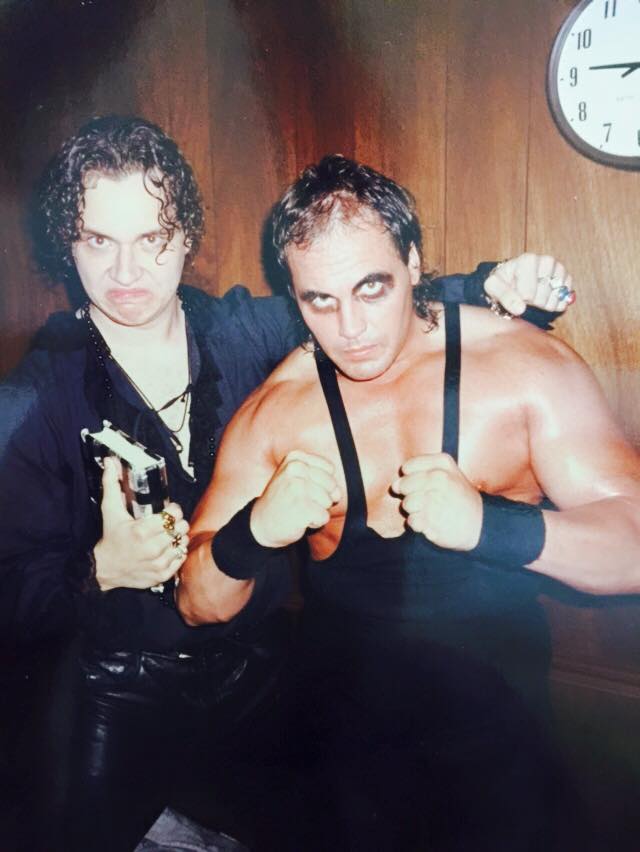
DC Drake with Carmine DeSpirito.
Jules Strongbow, Larry Winters, Bruiser Brody and Sgt. Slaughter were among his favorite opponents. “I must have wrestled Slaughter 50 times one summer. Billy Graham was like having a night off. He was great. One time before a show, Graham said, ‘Hey dog, don’t knock me down too hard.’ I remember I felt bad because I had a career outside wrestling. I never asked guys to do a job for me. I would get disqualified or counted out. I had something solid to go home to. Most didn’t. That was always on my mind. I really respected the wrestlers I worked with. Especially the ones near the end of their careers. I didn’t have to go over. I wanted to give the fans a show. I wanted them to go home and talk about what they just saw.”
DC Drake retired from the ring in 1995. He had an opportunity to work for Extreme Championship Wrestling after a one-off appearance for them. Drake decided to walk away instead. It was a wild ride. He left his mark on the wrestling world. He retired from the ring with honor and dignity on his own terms. He knew in his heart it was time to say goodbye to the business he loved.
In retirement, there was a common thread that continued in the life of Don Drake. He definitely entertained countless wrestling fans. In and out of the ring, he always made himself available to help people. In fact, helping others has been his life’s work to this very day. “I had a family member who was an alcoholic. It was my grandmother. She was a wonderful person, but I never saw her sober. I decided I wanted to help people with similar problems. I went to Eastern Connecticut State University. I received my bachelor’s degree in psychological counselling. Then I went to Cambridge College in Boston and received my master’s degree.”
Some of Drake’s accomplishments include becoming the director of the Steppingstone mental health treatment facility in Fall River, Massachusetts. He was also instrumental in opening the homeless shelter in Fall River. He also headed up a program at Shattuck Hospital for people with HIV and substance abuse issues. Drake retired in 2017.
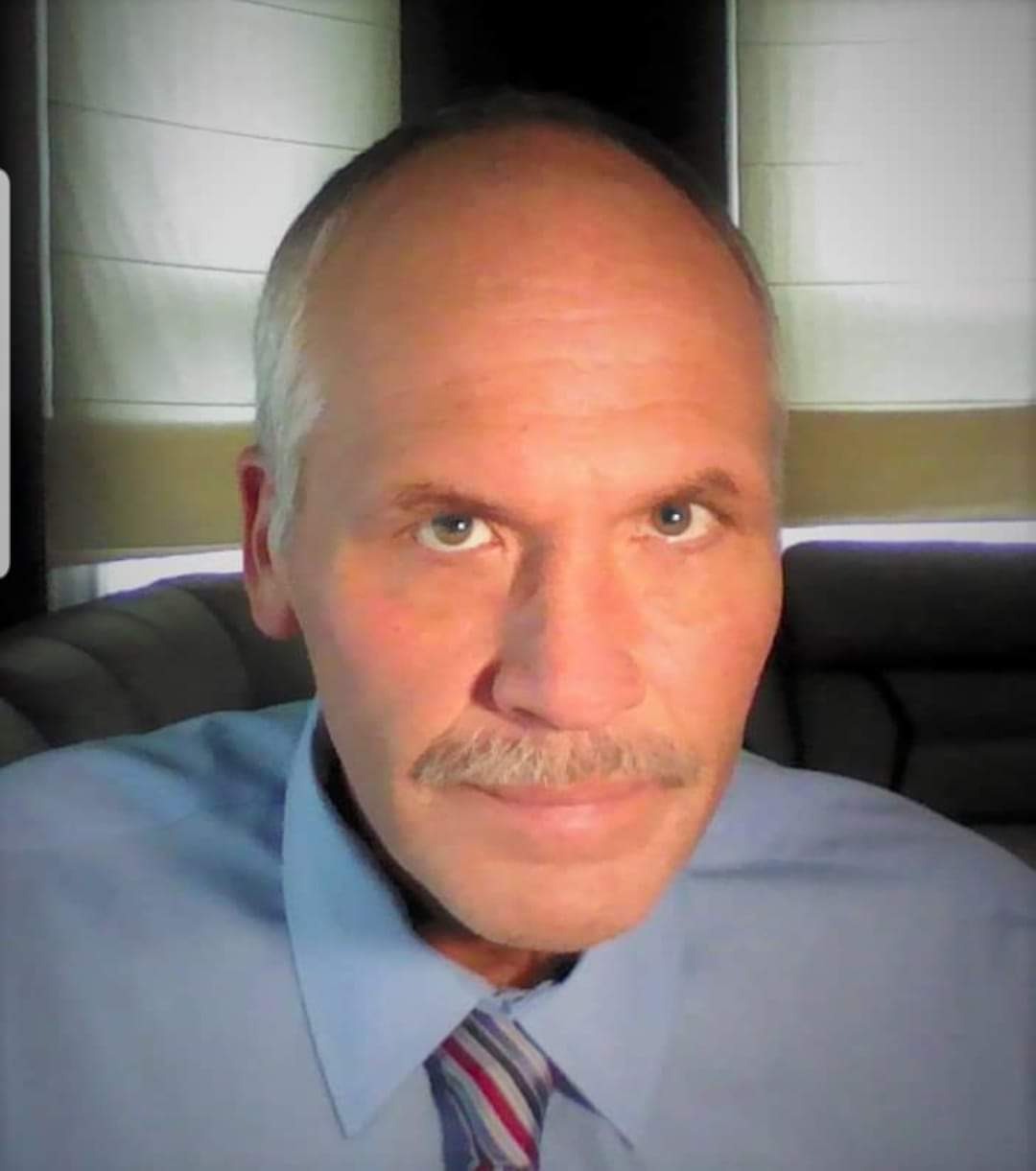
A recent shot of DC Drake.
He didn’t stay retired for long. “I stayed retired for about a year. My daughter is the head of finance at Connelly Law Offices. She told me they had clients who could benefit from my expertise and experience. I started part-time and now I’m a full-time consultant at the firm. The reason I like working there is we share the same philosophy working with people. They do a lot of elder law. People deal with challenging circumstances later in life. It’s perfect for me. I really enjoy working there.”
I asked Drake if a young wrestler who appeared to have all the tools approached him for advice, what would he offer them. He thought about it and answered: “I would tell them the truth. I would encourage them to think about it long and hard. I would explain the pros and cons. I’d tell them if they have a family, I wouldn’t recommend wrestling as a career.”
There is more.
“The truth is I think wrestling is a dying business. The fans don’t get angry at the wrestlers anymore. Everyone is smart to the business. Today they get angry at the bookers. They criticize the bookers. In the past, nobody knew what a booker was. Today the wrestler is nothing more than an actor and everyone knows it. I’ve had people so mad at me, they wanted to kill me. I had a woman up in Maine put a rock inside her purse and hit me in the face with it. She busted my lip open. I wanted that anger from the crowd. That’s never going to happen again. What really affected and hurt the business was the demise of the state athletic commission. Today anybody can open up a wrestling company. The athletic commission kept it a legitimate sport. Wrestlers needed to be licensed. Today a guy 130 pounds can be a heavyweight champion. All this crazy flipping around and gymnastics makes wrestling look completely unbelievable.”
Drake is the father of six. He has 14 grandchildren. None of his children aspired to become a wrestler. Drake and his wife live on the Seacoast in Massachusetts. He looks back on his career in the wrestling world fondly. “I learned a lot about life. I learned a lot about people. The biggest lesson I learned was always dip your toe in first. Keep your eyes open. I can say that as a person who rushed in at times. I needed wrestling when I was younger. Wrestling saved me from going down the wrong path in life.”
I asked Drake if some of his peers from the wrestling world were sitting around a table and his name came up, how would he like to be remembered. “That I was not a typical wrestling promoter. That I was a nice guy.”
DC “Mad Dog” Drake was an anti-hero in the wrestling world. In the real world, Don Drake dedicated his life to helping people. That is the definition of a real hero.
